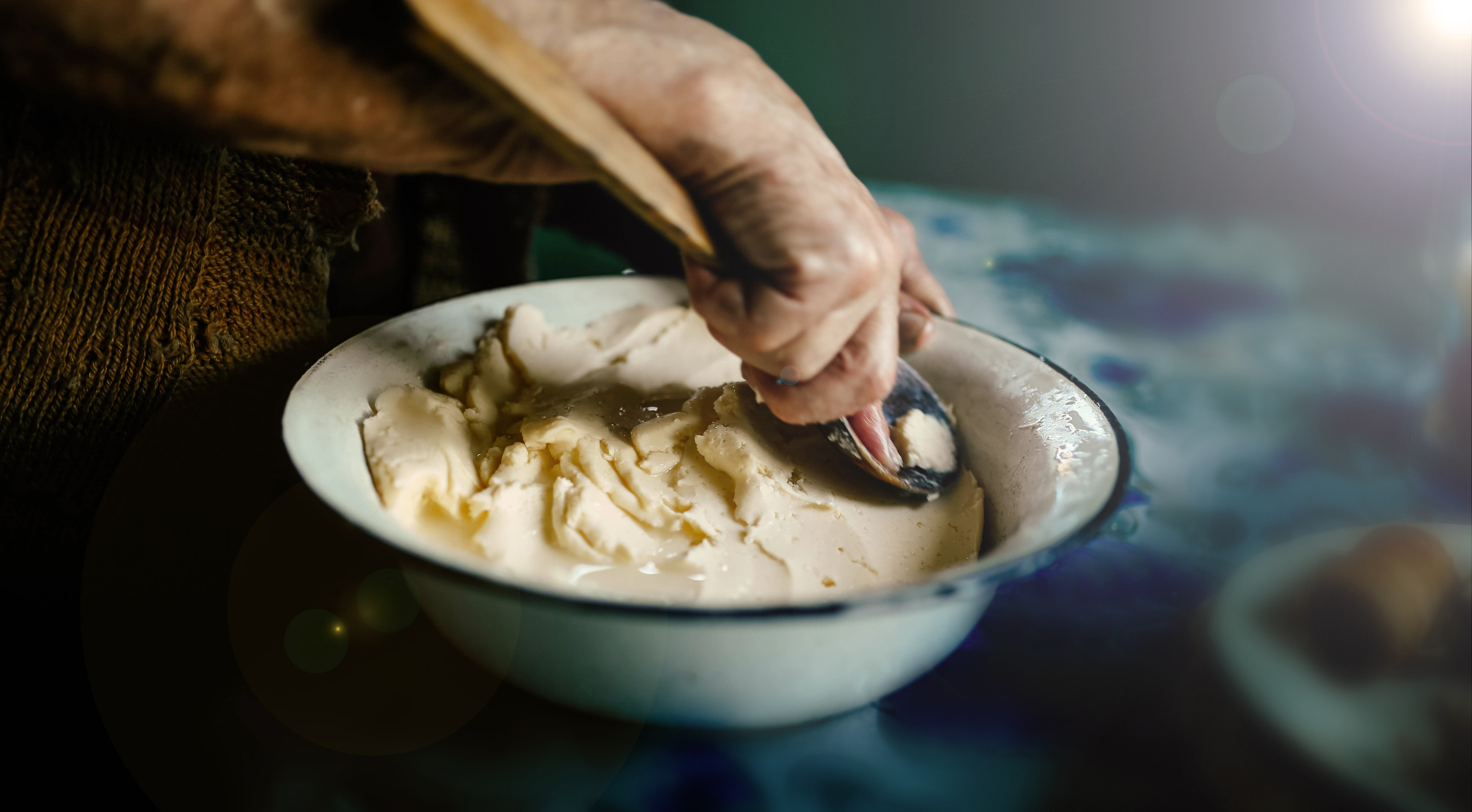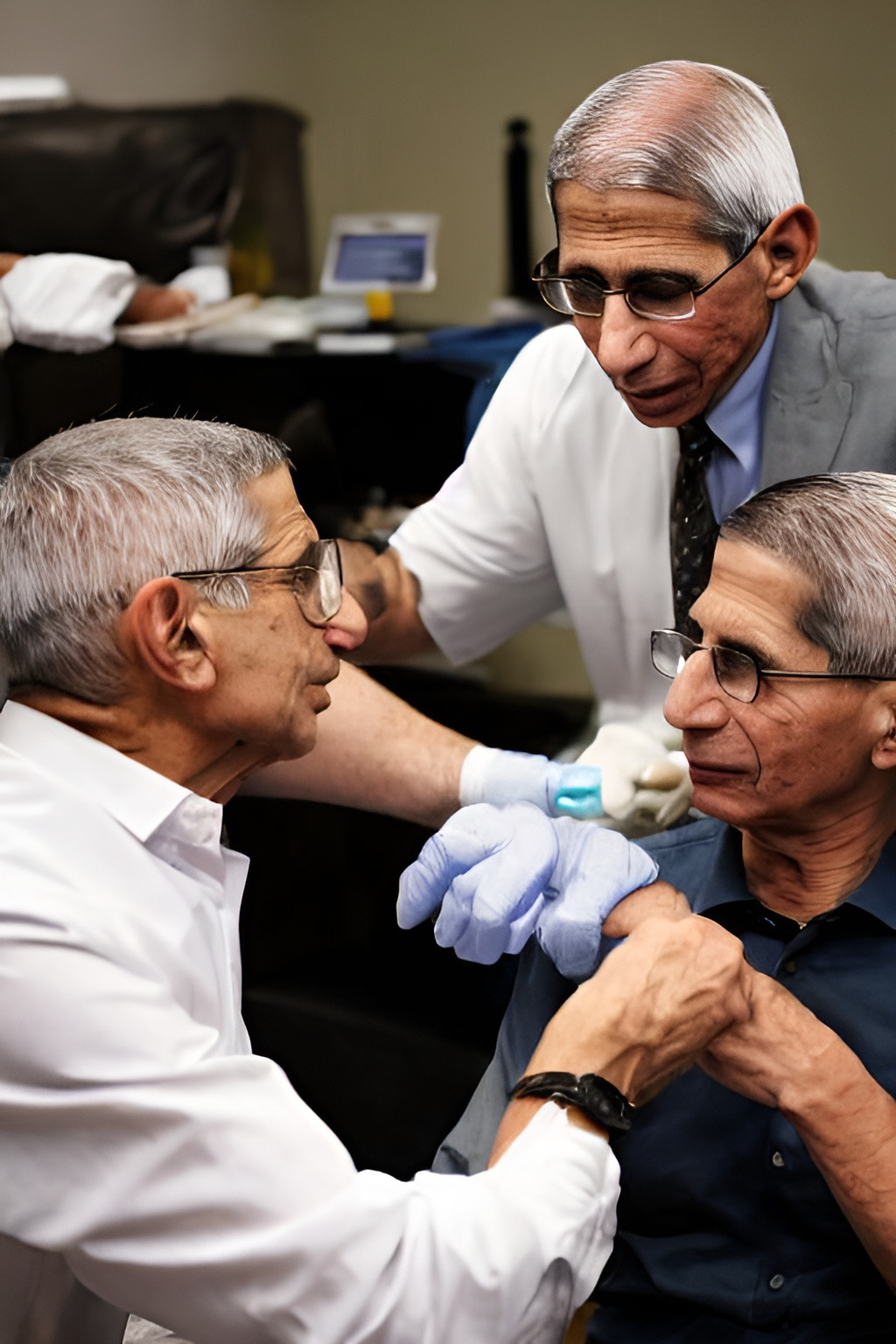The rise of pills to curb obesity raises some serious questions about the medicalization of life.
Back to the Future of Food

The way to fix our diet is simple—but it won’t be easy.
Over the course of the 20th century, a great transformation took place in the eating habits of the Western world. The foods mostly eaten by our great-great- and great-grandparents, and all of our ancestors before them back to the first Homo sapiens, were displaced by new foodstuffs produced in factories using new technologies and new ingredients. Although this process began here in the West, in Britain and America particularly, nowhere on the planet, not even the tribal reservations of the darkest Amazon, has escaped these changes.
Refined wheat and grain products; new classes of fats made from vegetables and seeds using complex processes like hydrogenation; factory-farmed grain-fed meat; and a whole cornucopia of additives ranging from preservatives and texturizers to colorings and stabilizers—none of these things had ever been consumed in quantity. Some had never even been consumed at all, but now all were combined and packaged into a type of product we call “processed” or “ultra-processed” food.
Weston A. Price, a Canadian dentist who set up his practice in Cleveland, Ohio in the late 19th century, observed the early effects of this dietary transition and wrote about them in his timeless study Nutrition and Physical Degeneration, first published in 1939. As his title intimates, the effects were not good. The more industrially-produced foods his patients consumed, Price saw a corresponding decrease in their oral and facial health and development, and in their development more generally.
The effects were especially harsh for children. More and more kids arrived at his clinic with mouths riddled with cavities, crowded teeth, poorly-formed dental arches (the roof of the mouth), and narrow cheeks and nostrils. It was as if the entire structure of the human face was collapsing, with disastrous consequences not just for appearance, but for health and well-being too. Many of the children displayed serious behavioral and learning difficulties that had, until that time, been largely unknown.
Price knew that the proper way to establish the cause of this physical degeneration would be a detailed comparison with groups who were still eating what we might call “ancestral diets,” untouched by the advance of industrial food science. Together with his wife, Price embarked on a globe-trotting adventure to visit traditional tribal and rural societies on almost every continent. The Prices went from the Arctic Circle to Africa, from the Scottish Highlands and Islands and the high Alpine pastures of Switzerland to the islands of the Pacific.
Wherever the Prices encountered peoples who cleaved to the foods their ancestors ate—especially nutrient-dense animal foods like organ meat, blood products, fatty cuts of meat, eggs, shellfish, and dairy—they found “physically perfect people”: robust, flourishing, attractive. But wherever they found a traditional group who had adopted “the displacing foods of modern civilisation,” they also found the same conditions that so marred the appearance and lives of the people back home in Ohio.
The Implication of these encounters is clear enough in Weston Price’s writing: we pay a terrible price for deviating from the patterns of life set down over the majority of our long evolutionary history. The point is underscored remarkably in a way that is simply impossible to forget by a series of photographic studies of identical twins. Each pair of twins illustrates the same startling disparity in health. One twin had continued to consume their ancestral diet, and his or her physical health was clear to see. But the sickness of the other twin, who had abandoned the ancestral diet, was all too apparent.
False Advertising
Our ill health has only deepened in the 80 years since Price wrote Nutrition and Physical Degeneration. In that time we’ve moved even further away from the eating habits of our ancestors. The average child between the ages of two and five in the U.S. now derives nearly 60 percent of his daily calories from processed food, and the figures for the U.K. and Australia are even worse.
Today it’s considered quite normal, as an adult in the U.K., to consume 80 percent of your calories from processed food. This was the premise for a shocking BBC documentary that aired during the pandemic. For just one month, Dr. Chris Van Tulleken ate such a diet and documented its effects on his health. Dr. Van Tulleken gained significant weight, suffered from hemorrhoids and constipation, lost his libido, developed anxiety and insomnia, and found himself raiding the fridge in the middle of the night for more processed goodies, even though, by his own admission, he wasn’t hungry.
Perhaps most worrying of all were the structural changes that took place within his brain, as revealed by MRI scans taken before and after his experiment. The changes were typical of drug addicts, with an increase in connections between areas of the brain associated with reward sensations and automatic behavior. They persisted for months after he resumed his normal diet. The suggestion is that they may even be permanent. Dr. Van Tulleken’s brain had literally been rewired to make him want to eat processed food all the time. He has since released a book, Ultra-Processed People, to raise awareness of the effects of widespread consumption of processed food.
If we had heeded the warnings of Weston Price, there can be no doubt that the people of the developed world would now be much healthier than they are. Instead, we pushed on in the opposite direction, trusting the “expertise” of counsellors whose studies were funded by corporate money. Obesity, diabetes, heart disease, and a wide variety of chronic diseases now cripple our societies physically, morally, and economically.
With processed food we were primarily promised convenience, and we certainly got that. It’s never been easier or quicker to prepare and eat lasagna, mac and cheese, or a chicken pot pie. But we shouldn’t forget that we were also promised better health. With more or less the full backing of the medical establishment, seed and vegetable oils—among the principal components of processed food—have been marketed for decades as healthy alternatives to traditional animal (i.e., saturated) fats like butter, lard, and tallow. This happened because of the arrival, in the 1940s, of a scientific theory known as the “lipid-heart hypothesis,” which identified animal fats as the main cause of heart disease. Reducing the man on the street’s consumption of animal products in general has been one of the highest priorities in public health ever since, with dire consequences.
The authorities of the new regime had to market industrial byproducts, like cottonseed oil and soybean oil, as “essential” components of a healthy diet. This unlikely transformation was helped along early on by Proctor & Gamble, one of the first margarine manufacturers, which paid the American Heart Association a million dollars to endorse Crisco (literally, “crystallized cottonseed oil”) as a healthy alternative to animal fats. Self-proclaimed “nutritionist” Ancel Keys, whose sole qualification was designing the K-ration during World War II, provided the gerrymandered science to back up the AHA. He conveniently omitted data from countries that showed no correlation between animal fat consumption and heart disease. The French, famously, consume butter and duck fat as a national pastime. Their rates of heart disease are significantly lower than American rates, and always have been.
As early critics of the lipid-heart hypothesis predicted, rates of heart disease didn’t decrease as Americans consumed more seed and vegetable oils instead of animal fats. In fact, the opposite happened. Health worsened across the board. Scientific study after scientific study has now linked these novel fats to virtually every kind of ailment you can think of, from cancer and dementia to irritable bowel syndrome and diabetes. And, of course, heart disease.
A Borg in Trad Clothing
In 2023, being anti-seed and vegetable oil has become a trendy position. You could even call it “counter-cultural.” It characterizes the personal brand of crunchy moms, broscientists, paleo-dieters, and right-wing bodybuilders alike. Joe Rogan says seed oils are “industrial lubricants” on his podcast, and the Twitter health sphere abounds with posts and threads about the work of the late Dr. Ray Peat, especially his anecdote about how, in the 1940s, American farmers ended up fattening their pigs with seed and vegetable oils when they discovered that stuffing them with cheap waste coconut oil, which is almost 100 percent saturated fat, actually made them leaner. Rejecting seed and vegetable oils is a synecdoche for a broader rejection of the entire industrial food system, and of the ugliness and dependency that its products foster and represent.
This new identity extends to brands as well. Masa Chips, for example, offers organic corn tortilla chips fried in beef tallow rather than cheap soybean oil, claiming that they taste better and are better for you, which is almost certainly true. (Before 1990, McDonald’s used to cook its fries in beef tallow. If I had a dollar for every time I saw a post about that on health Twitter…I’d certainly have more dollars in my pocket than I do now.)
One brand that has positioned itself front and center in the anti-seed and vegetable oil camp is Zero Acre Farms. Zero Acre offers a single product, “cultured oil,” which it claims offers the best of both old and new: the nutritional benefits of the fats we used to eat before seed and vegetable oils came along and the environmental benefits we’d expect from a cutting-edge product. “Good food, good fat,” the company’s website proclaims. “Finally, a cleaner all-purpose cooking oil—with even more good fats than olive oil, a neutral taste, and a tiny environmental footprint.”
Cultured oil is one of those “foods of the future” you hear about all the time from the mainstream media, whether it be new “superfoods” such as cockroach milk (four times more nutritious than cow’s milk!), algae, or even recycled plastic turned into vanilla flavoring. Unlike traditional oils which are produced by mechanical pressure, including olive and walnut oil, or the newer seed and vegetable oils, which are produced in complicated and thoroughly revolting industrial processes, cultured oil is made in bioreactors with microbes, in more or less the same manner as brewing beer. Particular microbes are used which have the ability to produce the desired oil and then they’re given food—in this case, non-GMO sugarcane—and left to do their thing, fermenting the sugarcane to produce oil. The mixture is filtered, separating microbes from oil, and then the oil is bottled and sold.
The claims made about this stuff are pretty impressive. But is there any substance to them? Without getting too deep into an esoteric discussion of lipid science, let’s consider the kind of fat contained in a bottle of Zero Acre Farms’ cultured oil. The oil is almost 100 percent monounsaturated oleic acid. Monounsaturated oleic acid is definitely better for cooking and consumption than the linoleic-acid-rich polyunsaturated fats that make up the majority of virtually all seed and vegetable oils. Oleic acid is more chemically stable, meaning that it doesn’t degrade as easily under heating and form reactive compounds that attack the body’s tissues, causing everything from the hardening of blood vessels to insulin resistance. It also doesn’t stimulate the body to enter fat-storage mode either, or depress thyroid function, which also makes you put on weight.
But it’s still not the same as the kind of fats our ancestors would have eaten, or at least those in perfect health according to Weston Price’s definition. Although animal products contain monounsaturated fats in various proportions—the composition of beef tallow, for example, can be between 26 percent and 45 percent monounsaturated fats, depending on the cow’s diet—saturated fats predominate, and a bottle of Zero Acre Farms’ cultured oil doesn’t contain even a drop of saturated fat. And that’s by design, since saturated fats tend to be solid at room temperature, not liquid. At best, the product can be considered a compromise with the past, a half-way house between saturated and polyunsaturated fats that satisfies the desire to provide an easy-to-use liquid product.
Modification by Another Name
It’s not the nutritional profile that’s the real worry with “cultured oil” though. I’ve already mentioned the fact that the feedstuff is non-GMO sugarcane, and this is something the brand, with a health-conscious target market, really likes to trumpet: it’s a non-GMO product. But, actually, that’s not strictly true. The microbes that make the cultured oil are genetically modified, and that raises serious problems not only about the desirability of the product for health-conscious consumers but also its safety.
Zero Acre is well aware of this potential PR headache, just as producers of lab-grown meat know it’s probably not a good idea to tell consumers they’re eating cells that are functionally indistinguishable from tumours, or that living cow fetuses have to be tortured to death to provide the necessary growth medium for this supposedly “cruelty-free” product. Representatives of Zero Acre tie themselves into knots to avoid any kind of discussion of where the microbes that make their cultured oil come from. In an appearance last year on Dave Gornoski’s podcast A Neighbor’s Choice, for example, Zero Acre CEO Jeff Nobbs and “health consultant” for the brand Tucker Goodrich used a wide variety of euphemisms and distraction techniques to avoid saying the dreaded words “genetically modified.”
But the truth is there, just as I suspected it would be when I first heard about Zero Acre, in the patent for the industrial process used by the brand. “In some cases,” the patent states, “the yeast may be a recombinant yeast. In other cases, the yeast may be a chemically or physically induced mutant of a natural or recombinant yeast.” “Recombinant,” “chemically or physically induced mutant”—these are science-speak for “genetically modified.” How did I know this would be the case? Because I know what’s happening to the global food supply and why. More on that in a moment.
But first: Why would it matter if the bacteria are GMO? After all, they’re filtered out from the final product, right? Two words: Showa Denko. In 1989, the Japanese company Showa Denko decided to make one of its products, a tryptophan supplement, using a new method. Tryptophan is an essential amino acid (a building block of proteins) that’s found in normal food, but many people also consume it in supplement form. Amino acids are often produced using bacteria, in precisely the same manner as Zero Acre produces its cultured oil. And that’s what Showa Denko was doing. Then Showa Denko decided to splice new genes into the bacteria to increase the yields of tryptophan produced. Between five and ten thousand people in the U.S., the company’s main market, quickly fell ill with a vanishingly uncommon illness called eosinophilia-myalgia syndrome (EMS). In a few months, dozens of people were killed, but the final death toll may now be in the hundreds. Thousands were permanently disabled. Thankfully, the illness was quickly traced back to the tryptophan supplement all of the victims had been taking.
The case has been called the “thalomide of genetic engineering.” Although Showa Denko denied that the cause was its genetically-engineered bacteria, citing instead a faulty carbon filter that allowed some unspecified contaminant into the tryptophan, the company made the case impossible to investigate properly by totally purging its bioreactors before investigators could arrive and by settling quickly, for an unspecified amount, with the victims and their relatives. The authorities were happy to accept Showa Denko’s explanation, but this proves nothing—except, perhaps, that powerful interests are involved in an industry (biotech) that was already worth huge amounts of money in the ’80s and is now worth many times more.
It’s just as likely, as a number of experts have stated, that the genetic modification caused the bacteria to produce the toxic substance in question as well as more tryptophan. It’s settled science that genetic interventions, even with far more precise technologies like today’s CRISPR/Cas, can cause unexpected alterations to genetic code, with potentially serious side effects. The problem is, you just don’t know in advance. Can Zero Acre really tell us the filtration process removes toxic byproducts they don’t even know exist? No, they can’t.
It’s Not That Complicated
Zero Acre’s attempt to launder new GMO products into the food supply is not an isolated thing. In fact, it’s part of a process that’s happening on an alarmingly large scale. As long as the product itself isn’t GMO, companies in the U.S. don’t have to tell you if GMO are used to make it. If companies do say anything, they call their products “synthetic biology” or “syn-bio,” which most consumers probably won’t think twice about. Brave Robot’s vegan ice cream is one such product, containing a protein made using genetically-modified yeast. Probably the most famous example is the Impossible Burger, which uses a substance called “heme,” produced by a GMO, to make its fake-meat burger taste meaty and “bleed.” Customers and regulators have virtually no way to know how many “syn-bio” products are out there, or what they are.
The comparison between what happened with Showa Denko and thalidomide is instructive, because it alerts us to a more insidious danger with products made using GMO. In the case of Showa Denko’s tryptophan and thalidomide, the more-or-less immediate effects of their use were catastrophic and very visible. As awful as it may sound, this was a stroke of good luck. This made it easy, first, to identify that there was a problem, and second, to pinpoint what was causing it; although we shouldn’t forget that it still took eight years and tens of thousands of hideous birth defects and stillbirths for thalidomide to be removed from the European market in 1963.
Now imagine if, instead of causing seal-limb syndrome, thalidomide had instead caused a small but significant increase in the rate for a particular cancer, or a subtle but nonetheless meaningful reduction in brain development and IQ over a lifetime. How would we ever have found out? The answer is, we probably wouldn’t have. Thalidomide would still be used, and scientists would be puzzling over a diffuse statistical trend. This is why consumers should be told if they are buying products made using GMO, and regulators should spend more time and effort investigating the long-term effects of such products before they are allowed into the food supply.
Rather than being peripheral, the use of a genetically-modified bacteria is absolutely central to the nature and identity of Zero Acre Farms’ cultured oil. I’ve written at length, in my most recent book The Eggs Benedict Option and for this publication, about how the plan for a “plant-based future,” built around novel foodstuffs, is actually a plan for total corporate control of the food supply.
Over the last century we’ve already seen tremendous consolidation of food production in the hands of an ever smaller number of corporations—companies like Tyson, JBS, Nestlé, and Unilever—but we’re told this process must continue if we are to feed a projected global population of ten billion by 2050, within the boundaries of our binding commitments to reduce greenhouse-gas emissions. Traditional animal products will have to be abandoned, and the uniform global diet of the future, the first of its kind, will be built around “alternative” proteins like lab-grown meat, plant-based meat, and farmed insects, as well as new high-yield genetically-modified grains and legumes. What unites all of these foodstuffs is the degree to which corporations can own the processes involved and even the very organisms and plants themselves, using patents. To use corporate speak, corporations can pursue “vertical integration” even further, breaking new “ownership envelopes” down to the cellular level.
However much Zero Acre has tried to position itself as a counter-cultural brand—for instance by mobilizing “based and redpilled” “Seed Oil Disrespecters” on Twitter who neglect to tell their followers they have performance-based stock options in the company, or by courting respected authorities on ancestral eating, like Dr. Catherine Shanahan, who also neglect to mention they have stock options in the company—its pitch for a future free from seed and vegetable oils is nothing more than a pitch for greater corporate control over the fats we eat and cook with. The company has already raised significant amounts of venture capital backing. Last year, its series A funding round raised $37 million, from sources including Lowercarbon Capital, Fifty years, S2G Ventures, Virgin Group, Collaborative, Fund and Hollywood soyboy Robert Downey, Jr.’s FootPrint Coalition Ventures.
The simple answer to the problem of seed and vegetable oils is to return to the animal fats our ancestors ate: butter, lard, tallow, olive oil. It really is that simple. This is the lesson of Nutrition and Physical Degeneration, and it was the message of Dr. Catherine Shanahan, a devotee of Weston Price, before she decided to get on board with Zero Acre Farms. Her justification for changing her tune is that we can’t replace all the vast quantities of seed and vegetable oils being consumed around the world with high-quality grass-fed butter or olive oil without causing massive quantities of extra emissions from agriculture. That may be so. But to me at least, that line of argument simply reveals the extent to which real food sovereignty, restored health, and individual freedom are impossible within the corporate-driven climate-change paradigm. If we want to retain the best of the past, we’re going to need a totally new vision of the future.
The American Mind presents a range of perspectives. Views are writers’ own and do not necessarily represent those of The Claremont Institute.
The American Mind is a publication of the Claremont Institute, a non-profit 501(c)(3) organization, dedicated to restoring the principles of the American Founding to their rightful, preeminent authority in our national life. Interested in supporting our work? Gifts to the Claremont Institute are tax-deductible.
Our medicalized society continues to drink its own poison.
The obesity epidemic among children is not helped by what they are served at school.
Obsessive bodybuilding is a funhouse mirror image of obese trans Gatorade yoginis.
In a degenerate society, physical culture is revolutionary.
We don’t need to embrace dystopian transhumanist fantasies to optimize our well-being.






